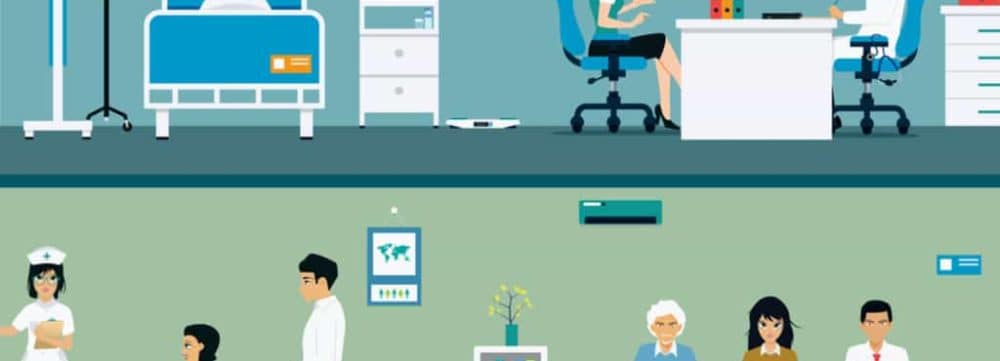Blog
Improve Overcrowded Emergency Departments with Design

We have seen an increase in recent years of Emergency Department (ED) demand. With that demand comes new challenges that the healthcare administration and the staff must overcome in order to provide the utmost care. Below is a summary of an article written by Lisa Ellis, a Boston-based freelance writer for The Center for Health Design. The article addresses the increased demand in emergency departments and how slow operations can impact patient satisfaction scores. Because patient satisfaction scores can impact the reimbursement levels for facilities, its very important that today’s hospitals address the issue. The article concludes with several recommendations for healthcare designers to combat the issue through design and ultimately improve patient satisfaction. To see the entire article, visit: Healthcaredesignmagazine.com
Improving Throughput In The ED
It’s not uncommon to walk through the emergency department (ED) of any hospital and find people waiting for treatment. The Centers for Medicare & Medicaid Services attributes the delay in treatment and overcrowding to several issues, including not enough staff to treat patients, lack of space, or inadequate coordination among hospital departments to move patients from the ED to an inpatient bed or other department.
Patient Satisfaction
Slow operations in the ED can lead to poorer outcomes like treatment delays, increased stress, decreased satisfaction, and overwhelmed staff. This situation can impact patient satisfaction scores, which, in turn, impact reimbursement levels for facilities.
Healthcare Design Strategies That Can Help
To help address the issue, healthcare designers are implementing creative strategies within the built environment to improve throughput in the ED and ensure patients are treated in a timely fashion. The Center for Health Design’s Emergency Department Throughput Toolbox offers several ideas, including:
- Reducing the traditional triage process by providing universal rooms and beds with telemetry capabilities, so that patients can be registered and evaluated in any room, and providing a self-service registration kiosk where patients can enter their demographics and health issues.
- Designating a specific area, such as admissions holding area or an express admission unit, to board patients who’ve already been seen and are waiting to be admitted to free up ED beds.
- Offering a separate fast-track lane to treat patients with minor injuries and illnesses more efficiently, leaving the ED rooms to those with more serious injuries. Equipment and storage that’s required for these minor injuries could be stored in this fast-track area.
- Locating laboratories where the patient is being treated (point-of-care testing) to increase the pace of discharge, expedite triage, and decrease delays.
- Using technology, such as computerized whiteboard that sync with electronic patient records, to provide real-time tracking to ensure that test results and diagnostic procedures are conveyed to all team members quickly. This enhanced level of communication allows for quicker decisions, potentially moving patients through the ED faster.
- Developing flexible treatment rooms that can accommodate diverse patient needs and situations, improving access to care and reducing the need for patients to wait for a room specific to their needs.
Return of Investment
Investing in some new design strategies can help improve throughput so that patients can quickly and easily receive the care they need and the staff can feel more productive. However, these strategies will only be effective if other elements, like operations and culture are also modified to reflect the intention of these design strategies.
Source: http://www.healthcaredesignmagazine.com/trends/architecture/improving-throughput-ed/







